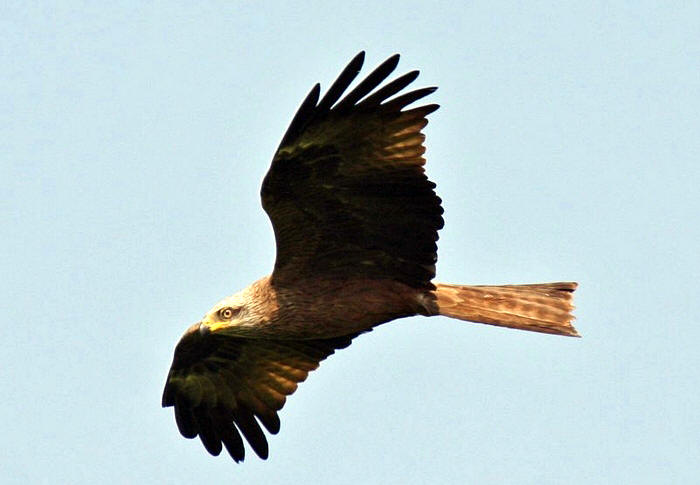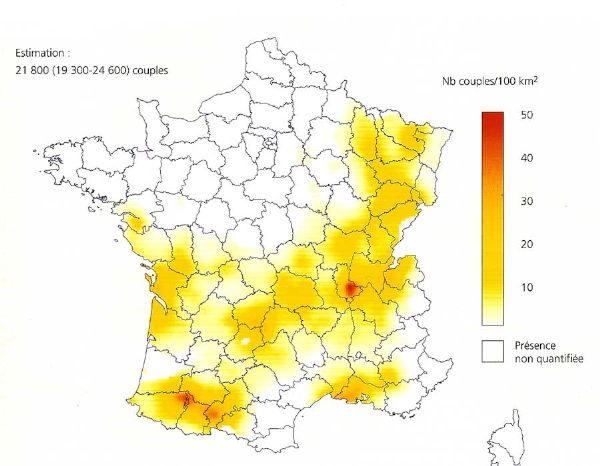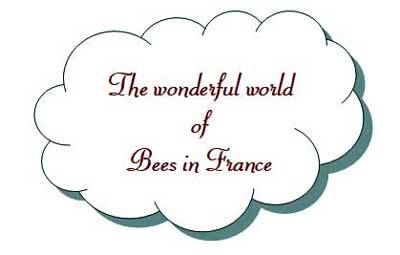Black Kite
Milvus migrans
Milan Noir
Overview.
Rarely found in the UK except as an occasional migrant the Black Kite is almost certainly the world’s most abundant bird of prey and can be found throughout the four continents of Europe, Asia, Africa and Australia. In Europe France hosts by far the largest number of nesting pairs with 22,000 to 26,000 pairs and these can be found nesting everywhere in the Country except the north-west. They are particularly abundant in Champagne, Lorraine, Franche-Comte and along the Rhône valley with sizable populations in Charente-maritme and Aquitaine. Although European populations overall seem to be in some decline this is not the case in France where the numbers, staggeringly, appear to have doubled over the last 20 years.
Appearance.
The name of this bird is perhaps a little misleading, although they look black against the light they are actually a fairly uniform brown. The head is brownish-white streaked with brown. Breast and belly are a brownish red and the underneath of the wings are a brownish black. The back is a fairly uniform brown with brownish black flight feathers and tail feathers. The tail is forked when half open and triangular or wedge shaped when fanned but importantly nothing like as pronounced a forked tail as with the Red Kite. The beak is black and the cere and legs are yellow. Juveniles are paler and there are no distinguishing features to identify or separate males from females.
Behaviour, Habitat and Diet.
In France the Black Kite is a migrant that mainly spends its winters in West Africa, from where they arrive quite early in the year around mid February and depart again in September. There are some isolated cases in recent years of Black Kites staying in France for the winter period but these have been so few in number that no significance can be attributed to this at present. They can be found in almost any type of habitat, and although there is a slight preference for wetlands, river valleys and areas with lakes this is often overridden by other factors, especially once breeding has taken place. As a rule dense forests and high mountains are about the only place they won’t be found.
They consume a diverse range of food which will vary according to different regions and seasons. Frequently opportunistic, this can comprise all types of carrion, both fish and animal, as well as a range of live prey such as insects, reptiles, birds and small mammals. Fields that have been close cut for silage will often attract large numbers of them if there are large numbers of voles present, as will rubbish tips and landfill sites, even when these are in large cities. More than 75% of their diet is likely to be creatures that have already died or are sick. They are an extremely sociable and gregarious species, often forming large groups to both feed and roost, although in France they tend to be separate when nesting. Roosting is usually in large trees and their flight has a lazy appearance with slow, non urgent wing beats and frequent circling and soaring.
Reproduction.
In the majority of cases the site chosen to nest will take into account two requirements: first, the presence of tall trees or rocky cliffs; secondly proximity to rivers, lakes or ponds. The most usual location for the nest is on a main branch or fork of tree, usually near the top. It may also be situated on the edge of a cliff, or a shrub or small tree growing on a cliff. The nest is a compact structure of twigs and small branches and these days it frequently involves the use of paper, plastic and other waste, so look carefully at that black plastic bag caught up in the tree, it may be part of a nest. In fact human debris or rubbish near the base of a large tree can be an indication of a nest. Nest are frequently renovated and reused year after year.
The female lays two to three eggs in April and incubates them herself for about 30 – 32 days; very occasionally the male may take a turn on the eggs. The young are fed by both parents and fledge after about 42 days but continue to stay with the parents for up to another two months.
Status, threats and menaces
As stated earlier, they would seem to have gone through quite a rapid expansion in France in recent years. This may be a result of a corresponding decline elsewhere, perhaps due to food shortages or, as with some other species, small changes in climate. The major threat to this species in line with other consumers of carrion is from eating other creatures, notably field voles, that have been poisoned; unfortunately this practise is often carried out on a large scale in “vole years” when the vole population explodes before collapsing again naturally. As with all the Raptors in France they benefit from full legal protection.
Size: 55-60 cm Wingspan: 135-155 cm Weight: 630-940 g
Lifespan: 25 years maximum
The decline of the Red Kite HERE



